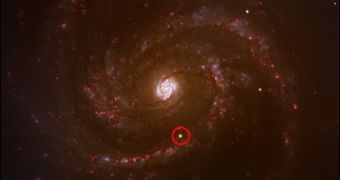Not all stars end in a supernova, but those which do produce one of the most impressive and mysterious phenomena of the Universe, which, although intensively studied in the last decades, is far from being completely understood.
A team of scientists at the European Southern Observatory now say they found out what fueled a spectacular supernova spotted last year and caused a massive explosion more than a billion times brighter that our Sun.
Ferdinando Patat of the European Southern Observatory (ESO) in Germany together with co-workers from Europe, Japan and the US used the ESO's Very Large Telescope (VLT) in Chile to analyze the 2006X supernova and found some very interesting things about its origins.
Type Ia supernovae, like this one, usually form when a white dwarf star accretes enough matter to reach critical mass, a level at which it can no longer support the pressure of electron degeneracy in the plasma it contains and collapses.
It takes only few seconds for an important fraction of the entire star to undergo nuclear fusion in the same time, releasing enough energy to transform the star in a supernova explosion. The team discovered what other scientists had theorized, that the supernova was fueled by matter streaming in from a nearby red giant star.
Binary star systems were thought to produce this type of supernovae, as the giant star then sheds most of its envelope, losing mass until it can no longer continue nuclear fusion, causing it to become a white dwarf. The other star also evolves to form a red giant, whose matter is accreted by the white dwarf, causing the latter to increase in mass, until it explodes into a supernova.
This is the first time experimental observations confirmed this theory, by analyzing light coming from the supernova, which changes with the amount of material it acquires from the donor star.

 14 DAY TRIAL //
14 DAY TRIAL //